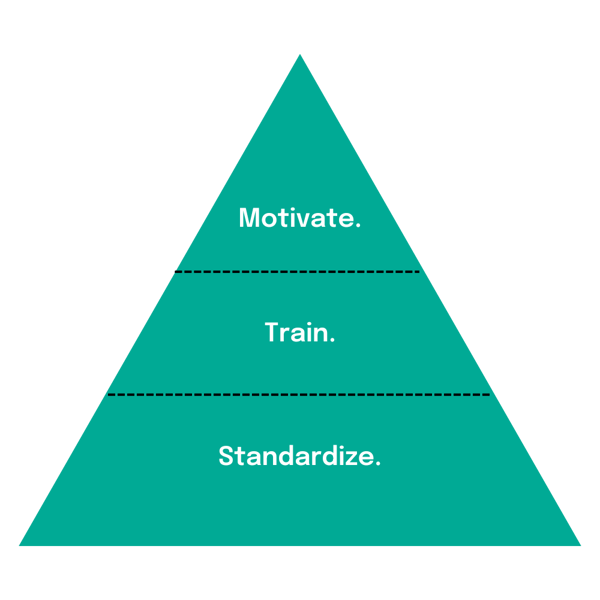

How to Efficiently Reduce Errors and Downtime in Manufacturing
Follow this three step approach to dramatically reduce human errors while motivating and empowering your frontline workforce.
Nearly every finished product we encounter is the result of a complex manufacturing process. Many of the steps in that process are manual tasks performed by people. After all, despite factories being augmented with robots and algorithms, human hands are still needed to operate machines, program the robots, and give the finishing touches that make many products unique. But like anything human, all processes are prone to error.
The most common mistakes on the shop floor include:
- Errors resulting from lack of quality control standards. When we don’t know what the definition of great is, we tend to make assumptions and subjective decisions. Both can be highly detrimental on the shop floor.
- Errors in how production or assembly lines are set up. At this stage, operators typically go through a checklist to ensure all steps are tracked and implemented. If this checklist is unclear or, worse yet, if there’s no established process to guide the operator, the risk of deviation or error is very high.
- Measurement and counting errors. Even the best of us tend to go on auto-pilot when we perform a given task every day. An apathetic or complacent attitude is the greatest enemy of productivity and excellence.

1. Standardize.
Standard operating procedures (SOP) are the foundation of a well-oiled manufacturing process. They provide standard guidelines for your team members to complete a given process. SOPs are often used to ensure that operations run smoothly: with cohesion, performance uniformity, and in compliance with safety measures and regulations.
- Having SOPs is essential to reduce manufacturing errors and downtime.
- Making them easily accessible and consumable through step-by-step digital instructions can go a long way to ensure they become the beating heart of your operations.
- Companies that transform this knowledge into dynamic instructions that are easy to update and access on the job can see First-Time-Right improve by up to 40%.

2. Train.
On-the-job training is equally important to mitigate the risk of errors. Companies shouldn’t simply train new recruits and then forget about skill building. Most of the information gained in traditional onboarding and training is often insufficient or quickly forgotten.
- Learning on the job while collecting and providing regular feedback is a lot more effective.
- Build leadership skills among your most experienced employees and encourage them to mentor others in order to facilitate knowledge transfer.
- Foster a culture of continuous learning and crowdsource knowledge from the shop floor to further improve your procedures.
3. Motivate.
Distrust, control, and micro-management are all human behaviors that can deteriorate collaboration and team spirit.
Involve your team in shaping your standard operating procedures, so they can make meaningful contributions to the business. Create a strategy to capture your team’s knowledge and expertise and reward those who contribute.
It’s ideas and feedback that drive continuous process improvement. There are a number of Lean methodologies that can help provide the practical framework for these initiatives - you don't have to start from scratch.
At SwipeGuide, we see that teams who focus on these three things can reduce errors by up to 67%, supported by a digital work instruction platform that facilitates knowledge sharing and easy access. Customers like PepsiCo, Heineken, and Animo can update and implement SOPs with ease, streamline on-the-job training, and keep operational knowledge at hand to prevent errors. The result? A 33% improvement in changeovers and 30% fewer downtime incidents across the board.

Read more about how to reduce downtime in manufacturing:
👉 Reduce Human Error in Manufacturing = Improve Product Quality.
👉 Crowdsourced Knowledge Drives Continuous Improvement on the Shop Floor.
👉 Gain the Benefits of TPM Manufacturing with Frontline Knowledge.
Author
Revisions
It's time to simplify frontline training
Work instructions, checklists, and skills management - all in SwipeGuide
- Cut training time by 50%
- SOC I and II compliant
Get to know us
SCHEDULE YOUR DEMOResources
-
1
How to empower your frontline with better instructional design. -
2
How to gain the edge in Industry 4.0 with smart manufacturing practices. -
3
How to make excellent digital work instructions. -
4
How to deliver continuous improvement at the frontline with Lean principles. -
5
How to capture, share, and improve expert knowledge with digital SOPs.




